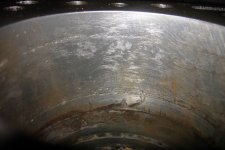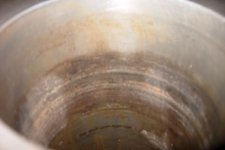Soundguy
Old Timer
- Joined
- Mar 11, 2002
- Messages
- 52,238
- Location
- Central florida
- Tractor
- RK 55HC,ym1700, NH7610S, Ford 8N, 2N, NAA, 660, 850 x2, 541, 950, 941D, 951, 2000, 3000, 4000, 4600, 5000, 740, IH 'C' 'H', CUB, John Deere 'B', allis 'G', case VAC
Not really a hydro trans.. but more akin to a 'power-shift' gear trans...
soundguy
soundguy
John already beat me to the punch on the balancer. Yes, the Select-O-Speed (SOS) transmission was an early hydro transmission that used a combination of hydraulics, tension bands, valves, and clutch packs to deliver 10 forward and 2 reverse speeds (+ PTO). I think these trannys came out in around '59 actually, but were greatly improved in late 60's and continued to be used with the ford 2000-6000 series. More knowledgeable TBN's can give you a more complete run-down of history and mechanics for the SOS.
In my case, the SOS actually was working reasonably well (when the engine seized), but the PTO no longer engaged properly. Unfortunately, unless I have a broken PTO shaft or cable, the repair will probably require me to dive into the transmission. Looks like the PTO and inching pedal (feathering valve) run off of the band 2 (Wow- that clears it up doesn't it?)
Engine first - I say!
Pete

